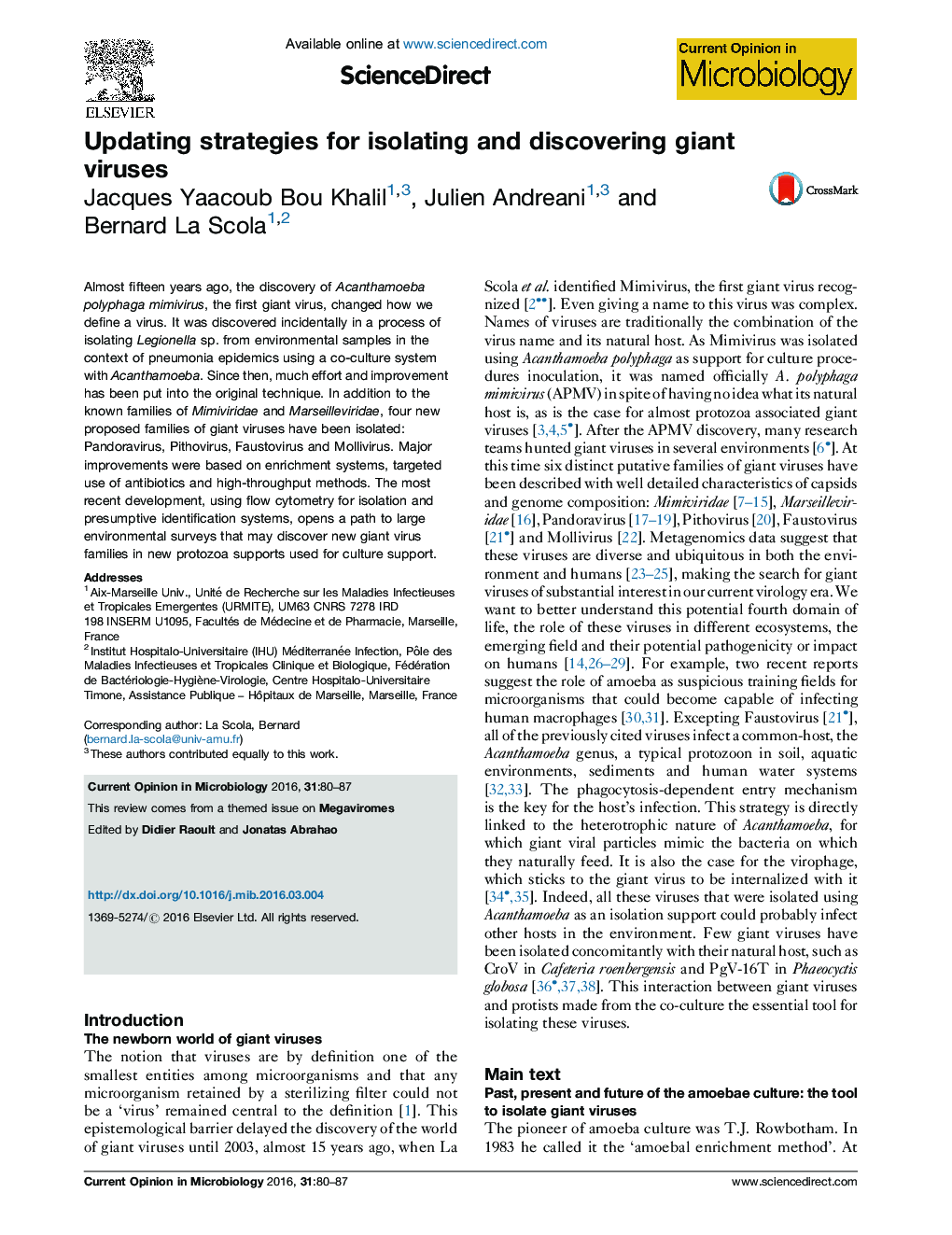| Article ID | Journal | Published Year | Pages | File Type |
|---|---|---|---|---|
| 6131582 | Current Opinion in Microbiology | 2016 | 8 Pages |
Abstract
Almost fifteen years ago, the discovery of Acanthamoeba polyphaga mimivirus, the first giant virus, changed how we define a virus. It was discovered incidentally in a process of isolating Legionella sp. from environmental samples in the context of pneumonia epidemics using a co-culture system with Acanthamoeba. Since then, much effort and improvement has been put into the original technique. In addition to the known families of Mimiviridae and Marseilleviridae, four new proposed families of giant viruses have been isolated: Pandoravirus, Pithovirus, Faustovirus and Mollivirus. Major improvements were based on enrichment systems, targeted use of antibiotics and high-throughput methods. The most recent development, using flow cytometry for isolation and presumptive identification systems, opens a path to large environmental surveys that may discover new giant virus families in new protozoa supports used for culture support.
Related Topics
Life Sciences
Immunology and Microbiology
Microbiology
Authors
Jacques Yaacoub Bou Khalil, Julien Andreani, Bernard La Scola,
